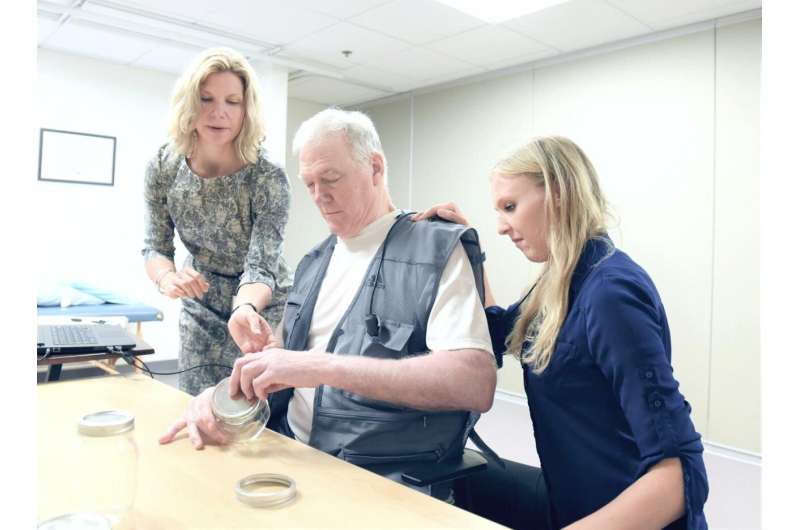Results of study could be biggest rehab advance in decades for patients after stroke

Results of a study co-authored by MGH Institute of Health Professions researcher Teresa Kimberley, Ph.D., PT, have the potential to be one of the most impressive advances in decades to help improve the lives of patients who have had a stroke with resulting arm weakness.
In an article published April 22 in The Lancet, “Vagus Nerve Stimulation Paired with Rehabilitation for Upper Limb Motor Function After Ischaemic Stroke (VNS-REHAB): A Randomised, Blinded, Pivotal, Device Trial,” the study reports that patients who incorporated vagus nerve stimulation during physical or occupational therapy showed 2 to 3 times the improvement in arm and hand function compared to those who received intense rehabilitation with sham stimulation.
“How to optimize recovery after a stroke has been studied for decades, but there has been little shown to dramatically improve peoples’ daily lives,” said Dr. Kimberley, who is a senior author on both the pilot and pivotal vagus nerve stimulation studies, directs the MGH Institute’s Brain Recovery Lab, and is a professor of physical therapy at the Boston health sciences graduate school. “Using vagus nerve stimulation paired with repetitions of therapeutic movement appears to help ‘rewire’ the brain to strengthen the brain pathways needed to perform the everyday tasks people want to be able to do. This may be an important new tool to improve people’s lives.”
The 108 patient participants in the study were implanted with a VNS system called Vivistim, produced by MicroTransponder, Inc., an Austin-based, privately held medical device development company, which funded the study. During six weeks of in-clinic therapy followed by three months of home-based therapy, participants received a stimulation of the vagus nerve via a small electrical pulse from a cuff wrapped around the nerve, powered by a unit implanted under the skin near the clavicle. This pulse, delivered during their rehabilitation exercises, essentially helps the brain relearn how to perform tasks such as carrying a grocery bag, using a fork, or casting a fishing line.
Participants in the trial ranged from nine months to 10 years post-stroke. With 50%-60% of the 658,000 yearly stroke survivors in the United States being left with upper extremity motor deficits that persist for months or years, the findings suggest they may be able to improve function and perform some everyday tasks once again.
The study reported there were no unexpected or serious adverse events associated with the Vivistim system.
Kimberley, who has an appointment as research staff at Massachusetts General Hospital Department of Neurology and as core faculty in the hospital’s Center for Neurotechnology and Neurorecovery, acknowledges the large team effort associated with running this trial, which would not have been possible without the multidisciplinary coordination provided by CNTR and the collaborative effort between the MGH Institute, MGH Neurology, and MGH Neurosurgery.
Source: Read Full Article
